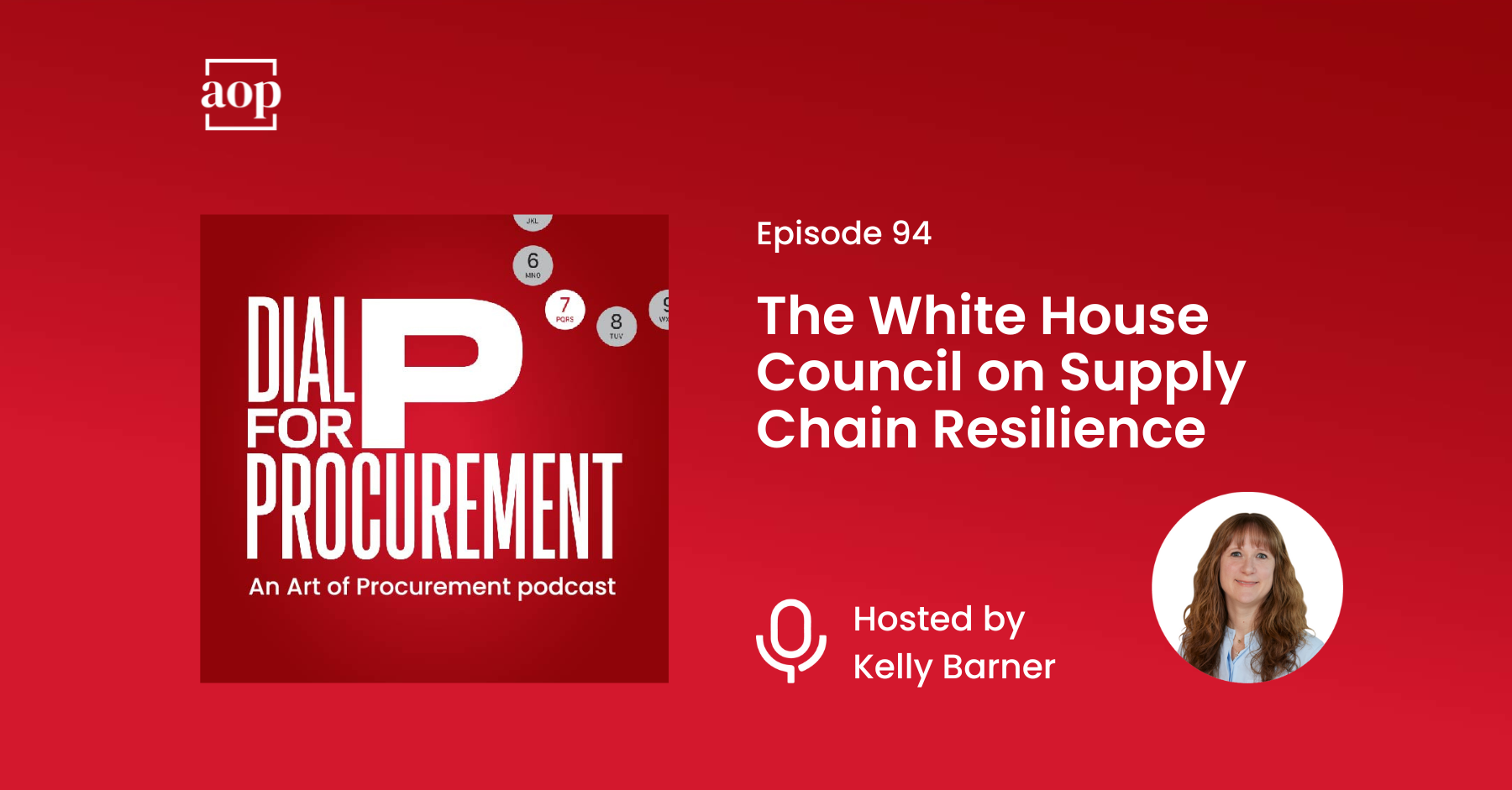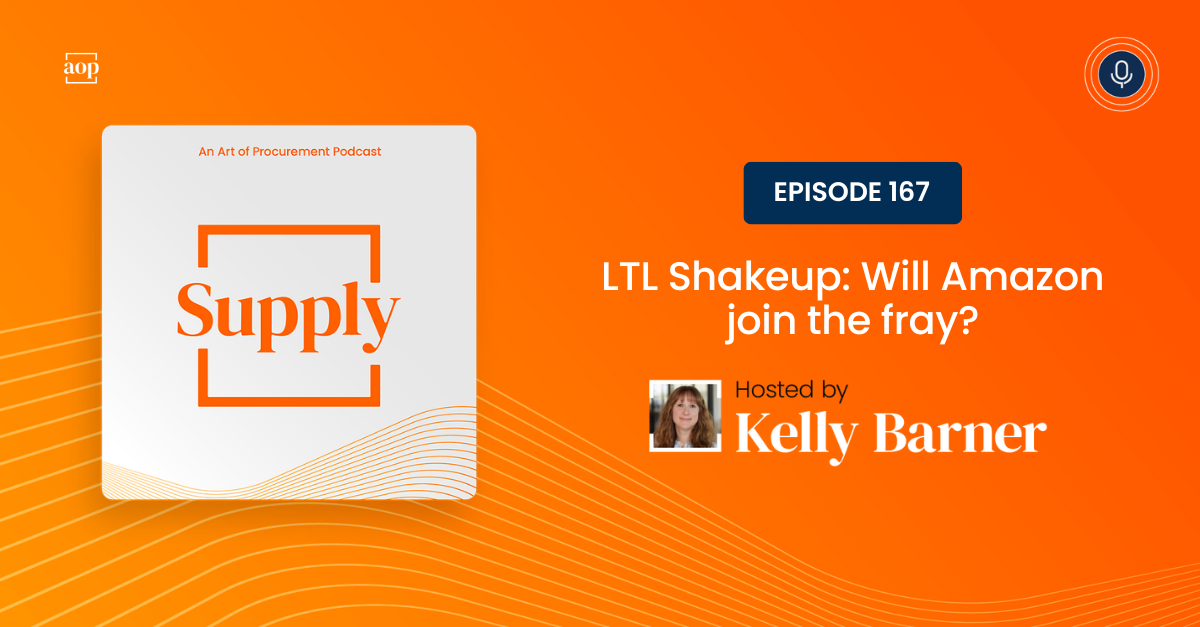
“Did you ever think we’d be talking this much about supply chains?” – President Biden
On Monday, November 27, 2023, President Biden announced the creation of a new White House Council on Supply Chain Resilience. At the event, he announced almost 30 new actions that his administration hopes will strengthen the supply chains that are the most critical to America’s economic and national security.
The story is still new, but those of us in procurement and supply chain need to follow what is happening in the Federal government so that we can be prepared to respond and comply.
Supply chains have been big news since 2020. Pandemic-fueled spikes in eCommerce demand stretched global supply chains to their limit. Then the Ever Given got stuck sideways in the Suez canal for almost a week, stranding 369 ships and nearly $10 Billion worth of trade. Port congestion and closures around the world led to retailers getting stuck with inventory they did not want or could not sell once it arrived.
All of this disruption led the White House to announce their Executive Order on America’s Supply Chains on February 24, 2021.
The order opened with an aspirational vision for a secure and diverse U.S. supply chain and quickly moved to define who should be involved in order to make that vision a reality.
There was the order for a 100-day review of specific supply chains, including semiconductors, EV batteries, mined rare earth minerals, and pharmaceuticals, and a call for sectoral supply chain assessments. Each cabinet secretary was asked to review their associated supply chain(s) looking for weaknesses and reporting back with recommendations.
The Executive Order reflected the fact that supply chains are so much more than logistics. Of course supply chains include how things move, but also where critical products and materials are made, and where the raw materials associated with them are made.
Critical Coordination
In my opinion, the most important statement in the Executive Order was in section 2: Coordination. “In implementing this order, the heads of agencies should, as appropriate, consult outside stakeholders — such as those in industry, academia, non-governmental organizations, communities, labor unions, and State, local, and Tribal governments — in order to fulfill the policy identified in section 1 of this order.”
It takes deep experience and understanding to run supply chains, let alone to improve and secure them worldwide. When the focus is economic and national security, you are by definition talking about the most critical and the most complex supply chains, products, and raw materials.
So on Monday, November 27th, when the White House Council on Supply Chain Resilience was announced, I wanted to know – who is on it?
The cabinet-level council is co-chaired by National Security Advisor Jake Sullivan and National Economic Advisor Lael Brainard. It includes nearly every member of the cabinet:
The Secretaries of Agriculture, Commerce, Defense, Energy, Health and Human Services, Homeland Security, Housing and Urban Development, the Interior, Labor, State, Transportation, the Treasury, and Veterans Affairs, and the Attorney General.
It also includes a few non-cabinet people who already have cabinet-level access to the President: “the Administrators of the Environmental Protection Agency and the Small Business Administration; the Directors of National Intelligence, the Office of Management and Budget, and the Office of Science and Technology Policy; the Chair of the Council of Economic Advisers; the U.S. Trade Representative; and other senior officials from the Executive Office of the President and other agencies.”
Based on the 2021 Executive Order, it is reasonable to expect that the cabinet secretaries would participate. They were given directives to participate in the 100-day review and also the sectoral assessments.
But what about section 2? What happened to coordination with industry, academia, NGOs, labor unions, and state and local governments?
Going with the FLOW
The other program that received extensive attention on Monday was FLOW: Freight Logistics Optimization Works.
Going forward, this already-established initiative will be run by The Department of Transportation’s new office for multimodal policy, national and state level freight strategy.
FLOW is a cross-governmental effort that partners with private industry for supply chain data-sharing. It provides intermodal freight information about cargo movements throughout the supply chain. Participants include marine and surface transportation carriers, terminal operators and warehouses.
In an effort to learn more, I watched a great interview that Robert J. Bowman, Editor in Chief at SupplyChainBrain, did with Andrew Petrisin, supply chain advisor with the U.S. Department of Transportation at HomeDeliveryWorld in September of this year.
Some of the additional details I picked up from this are that the data in FLOW is aggregated so that the source cannot be determined. Data privacy laws prevent the details from being acquired through freedom of information requests, and the scope of the program is currently focused on imports of ocean containers, but over time the hope is that FLOW will expand to include domestic freight as well as exports.
But the world needs skeptics in order to improve, and so I went looking for them.
In March of 2022, Supply Chain Management Review published an article about the FLOW program getting mixed reviews.
Ben Gordon, Managing Partner of Cambridge Capital and Managing Partner of BGSA Holdings, asked, “Why is the White House forming a supply chain data initiative but not including any supply chain software companies?” It is a valid point given the importance of data and digital capabilities to fast, strategic decision making.
In order to continue growing the FLOW program, the Department of Transportation has requested an additional $5.3 million in federal funding, partially to accommodate the addition of what are called “Beneficial Cargo Owners.” Most of us would recognize them as retailers. They include Nike, Walmart, FedEx, UPS, Home Depot, and Costco.
In March of 2020, there were 18 BCO member businesses, and now there are over 50. I think it is safe to assume they are not joining this effort out of the goodness of their hearts, so there is clearly a strategic business advantage to joining the program.
Amazon is notably missing from the program as well. Perhaps that will change as FLOW expands into domestic freight or as Amazon Shipping finally gets its legs underneath it.
From my reading so far, here are the pros and cons associated with the White House Council on Supply Chain Resilience:
- Pro: Keeps supply chains in the spotlight
- Pro: Reinforces the idea that supply chains are about logistics as well as production capacity and product/material availability
- Con: No private sector representation on the Council
- Con: The Council is “quadrennial” and will work in 4-year cycles, an eternity in modern business, economics, and national security
Will it make a difference, or will this fade into the past as just another press conference? Only time will tell. But the decision about who to include on the Council no doubt has an impact on its potential for impact.
Links & Resources
- Art of Supply Home Page
- Kelly Barner on LinkedIn
- Read: Dial P LinkedIn Newsletter | Who is NOT on the White House Council on Supply Chain Resilience?





